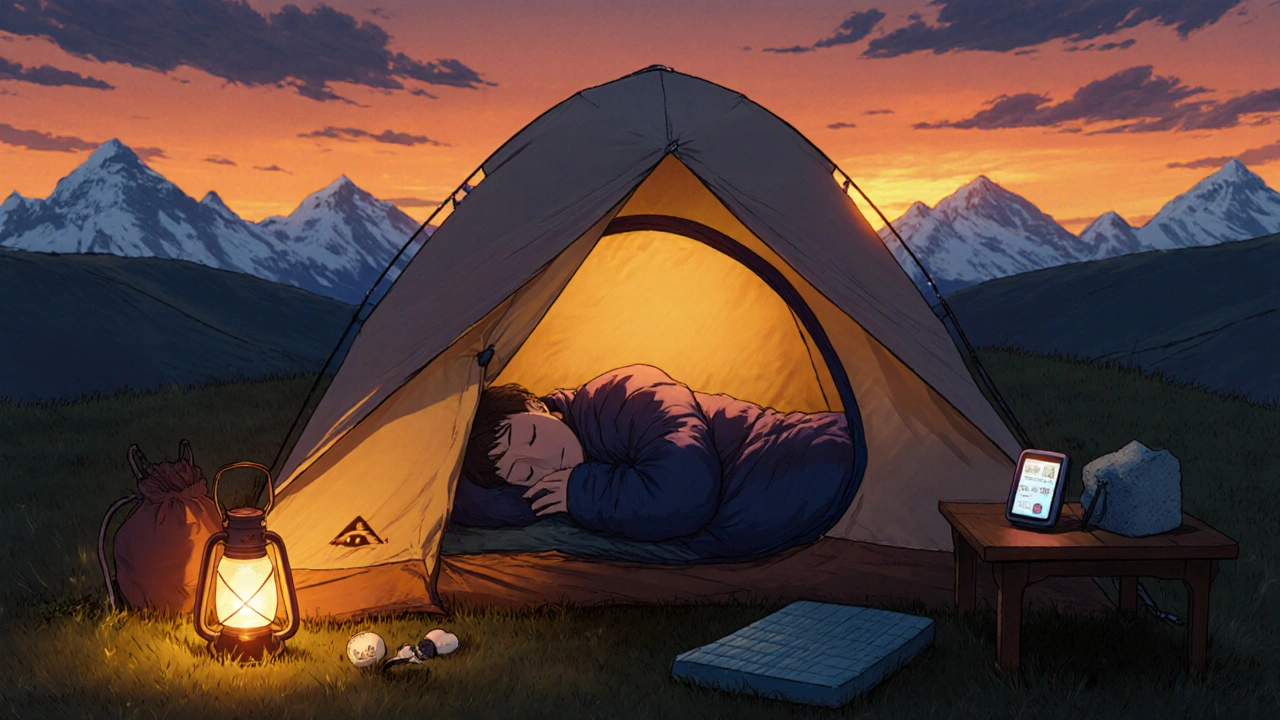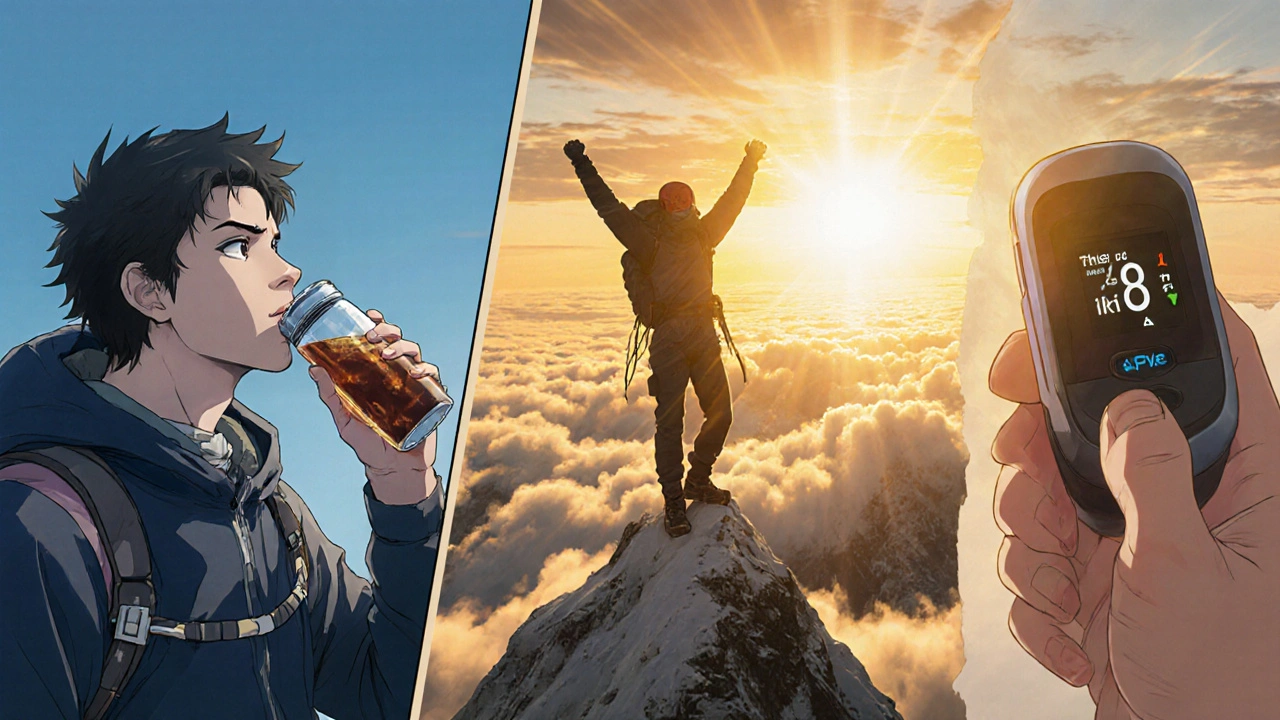
For safe acclimatization:
1 rest day for every 1,000-1,500m elevation gain
Minimum 6-8 hours sleep per night
When you head up to high elevations, Acute Mountain Sickness is a collection of symptoms that appear when the body can’t adapt quickly enough to reduced oxygen levels. The good news? Proper Rest and Recovery can dramatically lower your odds of getting sick, even before you start breathing thin air. In this guide we’ll break down the science, share real‑world tips, and give you a ready‑to‑use checklist so you can stay healthy on the trail.
At sea level your body operates with about 21% oxygen. Once you cross 2,500 m, the air’s oxygen fraction stays the same, but the pressure drops, delivering roughly 75% of the oxygen your cells expect. Your brain and muscles react instantly: heart rate climbs, breathing deepens, and the brain’s blood vessels dilate to pull more oxygen.
During deep sleep, especially in the slow‑wave (stage 3) phase, the body does two critical things:
If you skip these restorative periods, cortisol stays high, blood‑brain barrier permeability rises, and the risk of fluid leaking into brain tissue-known as High Altitude Cerebral Edema (HACE)-increases sharply.
Studies from the International Society for Mountain Medicine (2023) tracked 1,200 trekkers across the Himalayas. Those who averaged less than six hours of sleep per night had a 42% higher incidence of acute mountain sickness (AMS) compared to those who slept seven‑plus hours.
Another field experiment on Kilimanjaro measured oxygen saturation (SpO₂) in two groups. The well‑rested group maintained an average SpO₂ of 92% at 4,500 m, while the sleep‑deprived group dropped to 88%, a level linked to both High Altitude Pulmonary Edema (HAPE) and severe AMS.

Here’s a step‑by‑step playbook you can apply on any mountain adventure.
Rest isn’t a standalone cure; it works best paired with classic altitude‑sickness tactics.
| Method | How It Helps | Typical Recommendation |
|---|---|---|
| Gradual Ascent | Gives body time to increase red‑blood‑cell count | Don’t gain >300 m per day above 2,500 m |
| Hydration | Improves blood viscosity and oxygen transport | 3-4 L water/day, add electrolytes |
| Acetazolamide (Diamox) | Stimulates breathing, speeds up acclimatization | 125 mg twice daily, start 24 h before ascent |
| Rest and Recovery | Stabilises heart rate, lowers cortisol, supports brain fluid balance | 6-8 h sleep/night + rest day every 1,000 m |
| Nutrition (high‑carb) | Provides quick energy with less oxygen demand | 60-70% of calories from carbs |
When you combine these approaches, the overall risk of AMS drops from roughly 30% to under 10% for most trekkers.

Skipping sleep dramatically raises cortisol and reduces the brain’s ability to regulate fluid balance, making AMS more likely. Even a short 4‑hour nap is better than none.
Aim for a rest day after every 1,000-1,500 m gain. For a 5,000 m route, that means roughly three to four low‑intensity days spread throughout the climb.
Yes. Sleeping at lower altitude reduces nocturnal hypoxia, which helps keep cerebral blood‑brain barrier integrity. That’s why “climb high, sleep low” works.
Most modern devices are accurate down to -10 °C if you keep the sensor warm (rub with a hand or use a thin glove). Calibration checks at sea level help ensure consistency.
Medication like acetazolamide works best when combined with good rest, hydration, and a gradual climb. If you’re following the rest schedule, you may need a lower dose or none at all, but always consult a physician.
Remember, the mountain respects none of us, but a well‑rested body respects the environment. By making sleep and recovery a non‑negotiable part of your plan, you give yourself the best chance to stay healthy, enjoy the views, and safely reach the summit.
Your post reduces complex acclimatization physiology to a checklist, ignoring individual variability and the stochastic nature of hypoxic response.
While I see your point about variability, the checklist you dismiss actually reflects evidence‑based protocols that have saved countless trekkers from severe AMS.
Great rundown! 🌄 Sleep really is the unsung hero on the trail.
Totally agree! I always set a reminder to log my hours before hitting the sack. 😴
Skipping sleep on the summit is a gamble with your brain!
Sleep is not merely a passive state but an active neuroprotective process. During slow‑wave sleep, the brain clears metabolic waste through the glymphatic system. At altitude, this clearance becomes crucial because hypoxia accelerates oxidative stress. If the night is truncated, cortisol remains elevated, compromising vascular integrity. Elevated cortisol also dampens the ventilatory response, making acclimatization sluggish. Moreover, inadequate sleep impairs mitochondrial efficiency, reducing oxygen utilization. The cascade of these effects can tip the balance toward cerebral edema. Field data from the Himalayas show a clear dose‑response between sleep hours and AMS incidence. Even a modest increase of one hour per night cuts risk by roughly ten percent. Practically, this means prioritizing a good nights’ rest over marginal altitude gain. A low‑intensity day after a steep push allows the body to catch up on restorative phases. Using a pulse oximeter at bedtime can flag lingering hypoxia before symptoms manifest. Hydration and carbohydrate intake further support the sleep‑related recovery pathways. In essence, the rest‑day is a non‑negotiable component of any safe ascent plan. Neglect it, and you gamble not only with performance but with your very health.
One practical tip: pack a lightweight inflatable pillow and a thermal blanket; they dramatically improve sleep quality without adding bulk.
I found that a short meditation before bed helps settle my breathing rhythm, especially after a long day of ascent.
Oh sure, because who needs rest when you can just power through like a machine, right?
They dont tell u that the gov kinda hide the real data on how many folks die cuz of bad sleep up there.
Honestly, if you dont follow the rest schedule, youre just asking for trouble and a possible hike mai not be worth it.
Remember to log your sleep hours each night and compare them with your SpO₂ readings; patterns will emerge that guide your next rest day.